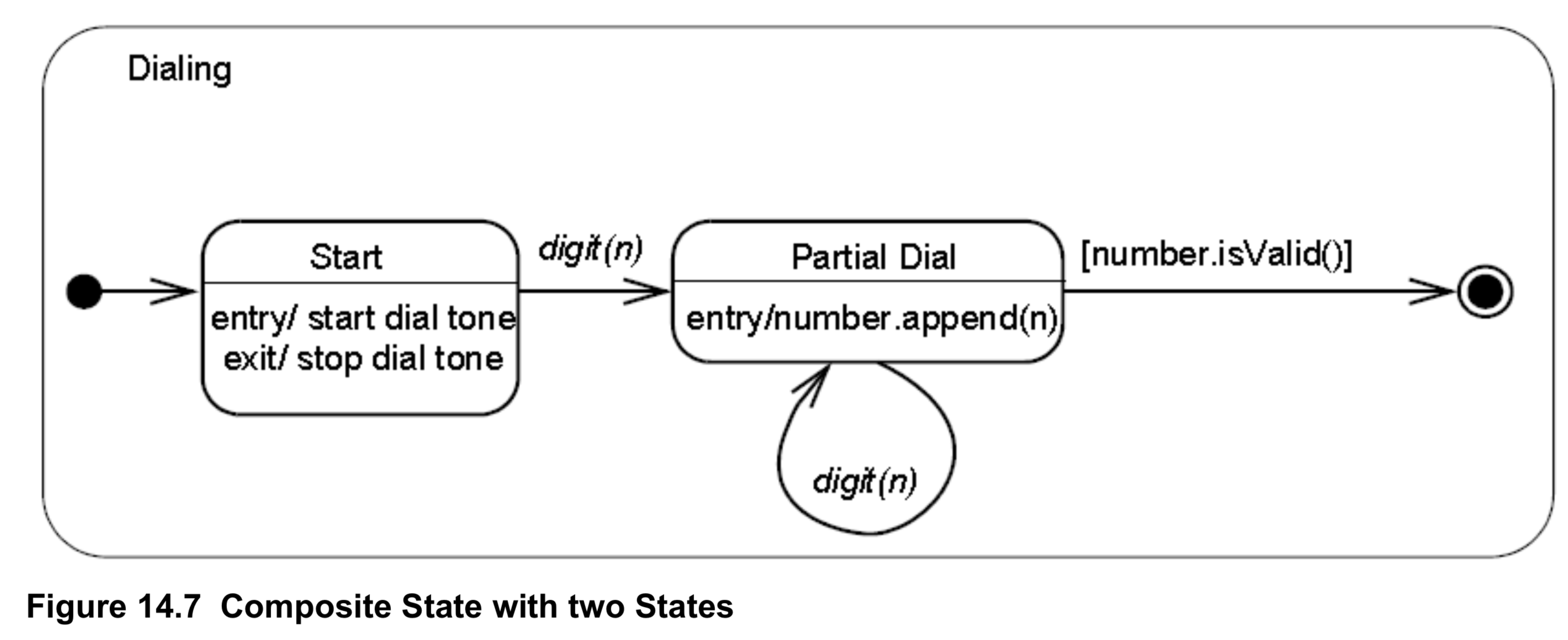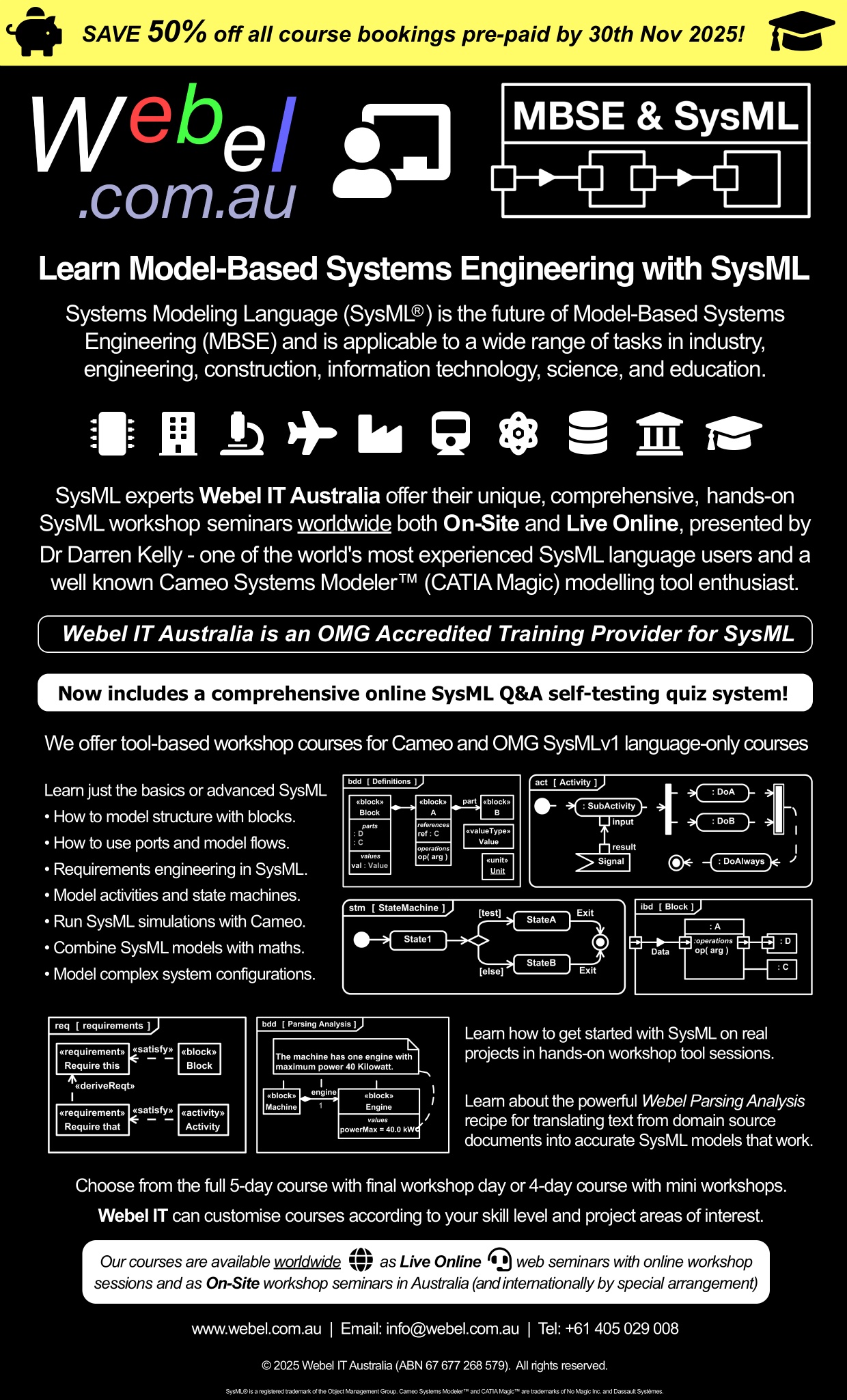Your guide for this tutorial is Dr Darren of Webel IT Australia
Don't miss the matching screencast video that shows it all brought to life in Magic Model Analyst® (Cameo Simulation Toolkit®)
Screencast: Tutorial: UML/SysML: StateMachines vs Activities: Operation-driven Transition case study - UML-2.5.1 'Figure 14.7 Composite State with two States' in Cameo Simulation Toolkit
The notation of 'Figure 14.7 Composite State with two States' shows some states for dialing a telephone number, with a composite state Dialing, some sub-states Start and Partial Dial, some entry and exit Behaviors, and some (apparently Operation-driven) Transitions and a guard.

This offers itself as a nice case study for showing how Activities can be used to drive State changes in Magic Model Analyst® (Cameo Simulation Toolkit®). To simulate that deceptively simple looking composite state Dialing we are, however, going to have to build a quite substantial little eco-system around it, and we'll learn a lot along the way.
This tutorial uses (in a couple of places) the Action Language for Foundational UML (Alf), although one can achieve similar (although somewhat less elegantly) using the Action Language Helper (ALH) as shown
at the end of this trail.
Learn SysML for MBSE with the Webel IT Australia Live Online web seminar or On-Site course!
Please email or phone Webel IT Australia on +61 405 029 008 to arrange On-Site, Off-Site, or Live Online remote web training seminars and workshops.
Webel IT Australia is an OMG-Accredited Training Provider for SysML!

















